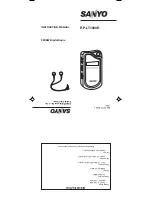
Quick Instruction, Version 2.2
Page 8 of 43 pages
Weatherdock AG Sigmundstraße 180 90431 Nürnberg
Tel.:+49 911 37663835 www.weatherdock.de
1.
General Information to AIS
1.1
What is AIS
AIS stands for
A
utomatic
I
dentification
S
ystem. AIS increases naviga-
tional safety and collision avoidance by transmitting vessel identifica-
tion, helping to reduce the difficulty of identifying ships when not in
sight (e.g. at night, in radar blind arcs or shadows or at distance) by
broadcasting navigational intentions to other vessels by providing ID,
position, course, speed and other ship data with all other nearby ships
and land based stations.
According to IALA regulations, AIS is defined as follows:
AIS is a broadcast Transponder system, operating in the VHF maritime
mobile band. It is capable of sending ship information such as identifica-
tion, position, course, speed and more, to other ships and to shore. It
can handle multiple reports at rapid update rates and uses Carrier Sense
Time Division Multiple Access (CSTDMA) technology to meet these high
broadcast rates and ensure reliable and robust ship to ship operation.
The IMO defines the performance standards as follows:
Ship to ship working, ship to shore working, including long range appli-
cation, automatic and continuous operation, provision of information
messaging via PC and utilization of maritime VHF channels
The Modules:
GPS system, AIS Transponder, VHF Antenna, and the Data Power Cable
and the appropriate application software.
AIS are required to function flawlessly in a variety of modes.
The relevant regulations requirements:
The system shall be capable of
An "
autonomous and continuous
" mode for operation in all areas.
This mode shall be capable of being switched to/from one of the fol-
lowing alternate modes by a competent authority;









































